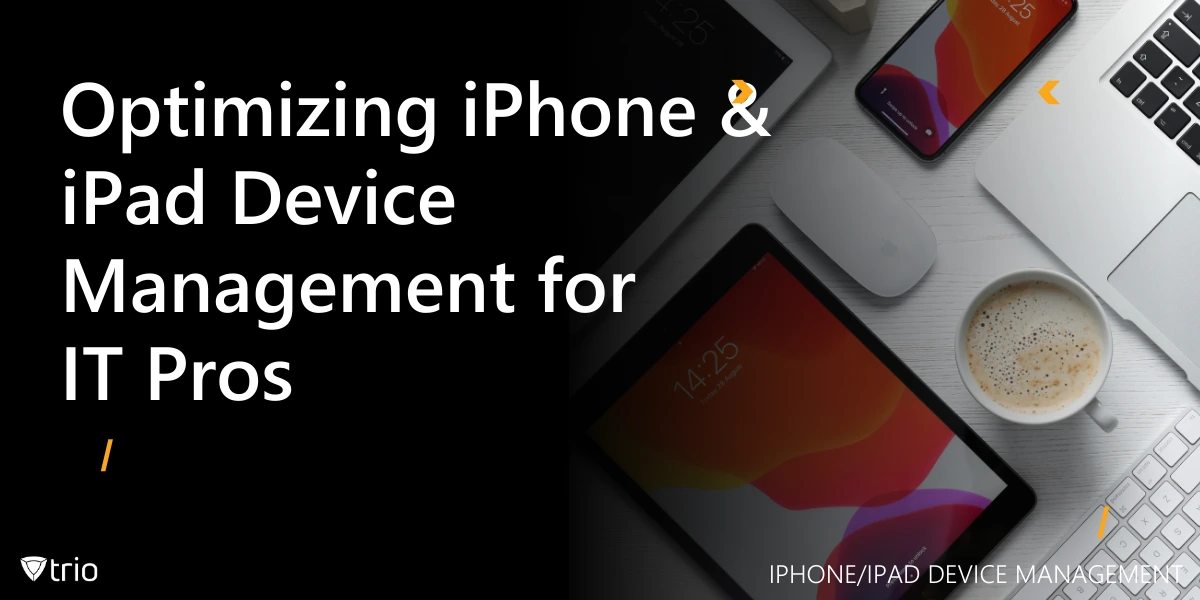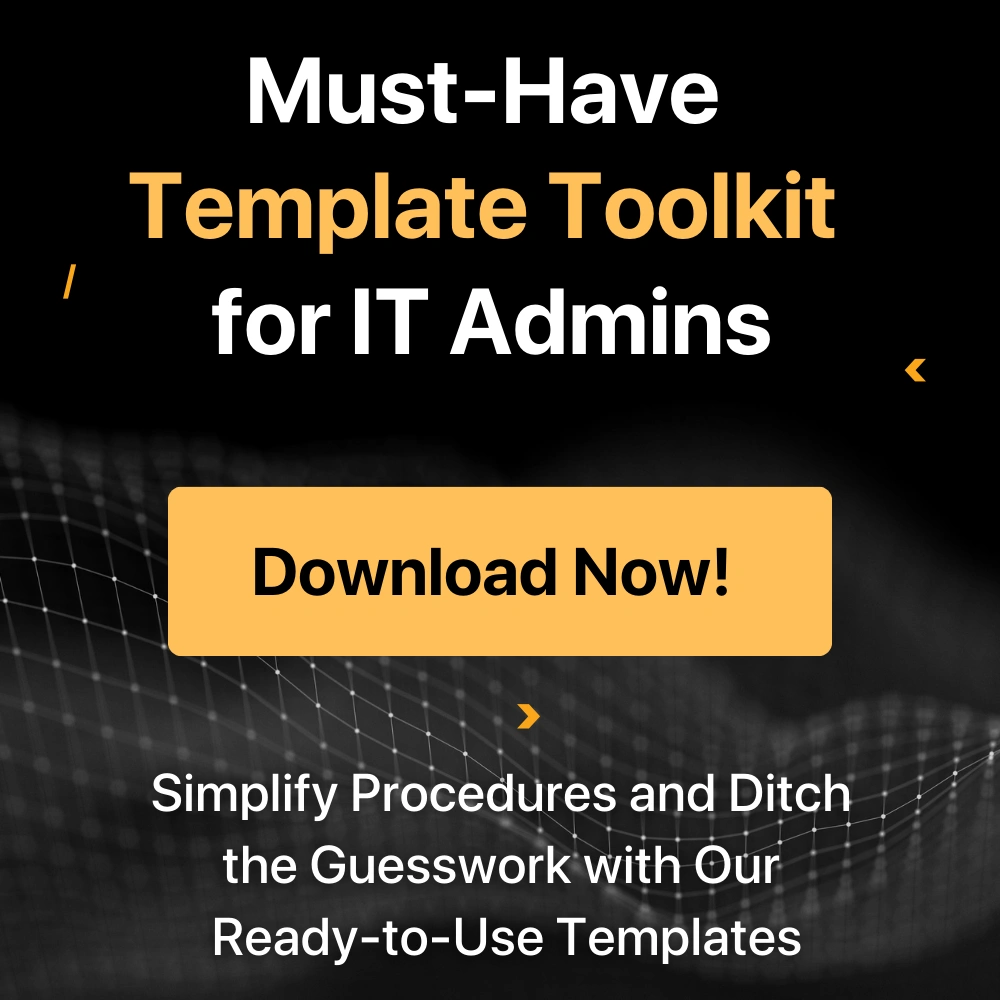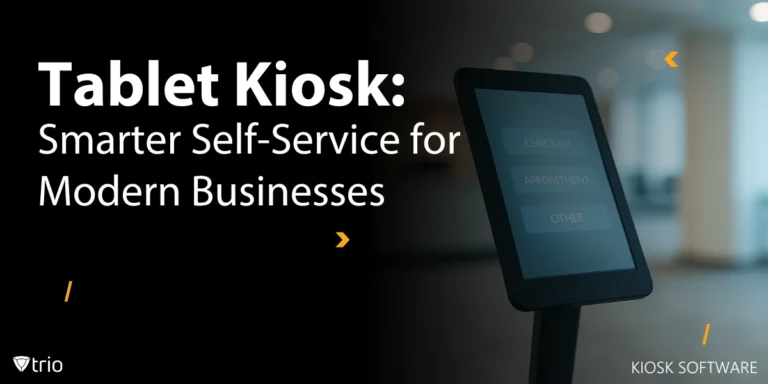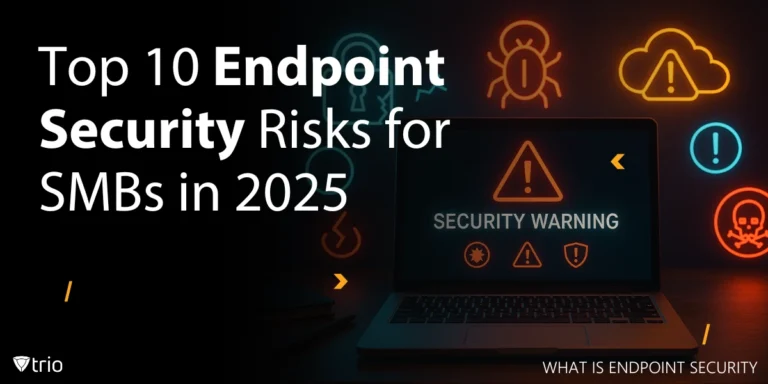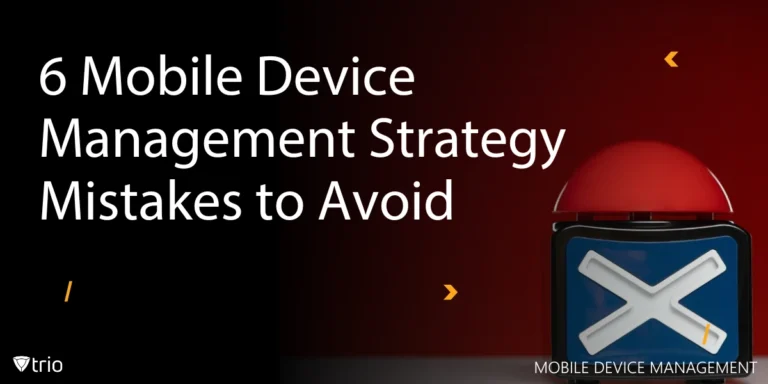Managing modern mobile devices is a complex yet crucial responsibility for today’s IT departments. Effective iPhone device management and iPad device management not only streamline operations but also protect sensitive company data. In today’s rapidly evolving technological landscape, understanding the nuances of mobile device management is essential for securing corporate assets and enabling productivity.
In this blog post, we will dive deep into the world of mobile device management (MDM) with a focus on iOS ecosystems. We’ll discuss key strategies, industry challenges, and best practices for implementing MDM solutions that cater to both iPhone and iPad deployments. We will also answer common queries such as what is mobile device management for iPhone and explore top-tier iPhone mobile device management software options available on the market. Along the way, we’ll reference terms like iPhone MDM and iPad MDM to help you navigate your organization’s device management journey with confidence.
The Evolution of Mobile Device Management
The proliferation of mobile devices in the workplace has transformed the way businesses operate. Today’s employees rely on smartphones and tablets to access email, documents, and essential applications wherever they are. This shift has necessitated robust device management solutions that can secure and optimize these devices without compromising user experience.
Mobile device management started as a basic tool to simply track devices and enforce minimal security policies. However, with the rise of BYOD (Bring Your Own Device) and the integration of cloud-based services, MDM has evolved into a comprehensive platform capable of managing everything from application deployment to security compliance. For IT professionals, adopting ios mobile device management practices is critical to maintaining control over an ever-expanding network of mobile endpoints.
To fully harness the benefits of MDM, organizations must understand the challenges associated with managing multiple device types, operating systems, and user behaviors. This understanding lays the foundation for creating an effective strategy that balances flexibility with stringent security measures.
Understanding iPhone MDM and iPad MDM
Mobile device management for iOS devices goes beyond simple tracking and asset management. When you search for terms like device management iPhone, you’ll find that comprehensive MDM solutions encompass a variety of functions. These include device enrollment, remote configuration, and security enforcement to ensure that devices meet corporate compliance standards.
iPhone MDM
When it comes to iPhone management, IT administrators often ask, what is mobile device management for iPhone? Essentially, it is a set of policies and tools that enable administrators to remotely manage, secure, and configure iPhones within an enterprise environment. This includes setting up Wi-Fi and VPN configurations, managing app installations, and enforcing security measures like passcode policies and encryption. Additionally, advanced iPhone mobile device management software can monitor device health, apply real-time updates, and even remotely wipe devices that have been lost or compromised.
Implementing an effective iPhone MDM strategy is about more than just security—it’s also about empowering users with the right tools while minimizing administrative overhead. By streamlining routine tasks through automation, IT teams can focus on strategic initiatives rather than day-to-day maintenance.
iPad MDM
Similarly, iPad MDM strategies have become indispensable for organizations relying on tablets for productivity and collaboration. iPads are widely used in sectors ranging from retail and healthcare to education and corporate environments. With robust iPad device management solutions in place, IT professionals can ensure that these devices are always up-to-date, secure, and configured to meet the unique demands of their roles.
Both iPhone and iPad MDM share many commonalities, but they also require tailored approaches. For instance, the screen size, usage patterns, and application needs might differ between smartphones and tablets. Therefore, an effective MDM strategy should account for these differences while maintaining a cohesive security framework across all devices.
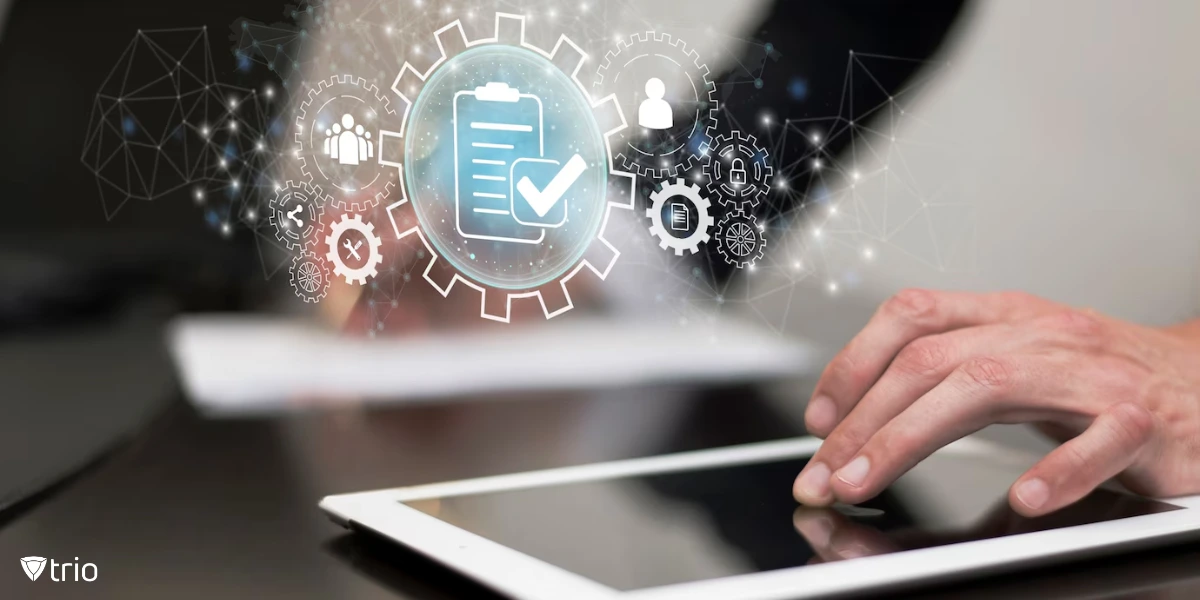
Key Benefits of Robust Mobile Device Management
Implementing an integrated mobile device management solution offers a range of benefits for organizations of all sizes. Here are some of the primary advantages:
1. Enhanced Security and Compliance:
By deploying strict policies across all devices, organizations can reduce the risk of data breaches and ensure compliance with industry regulations. This is particularly crucial in industries that handle sensitive information, where even a single vulnerability can have significant consequences.
2. Streamlined IT Operations:
Automated deployment and configuration of devices reduce the workload on IT staff. With tools that can remotely manage both iPhone MDM and iPad MDM, routine tasks such as updating software, enforcing policies, and troubleshooting issues become much more efficient.
3. Cost Efficiency:
By centralizing device management, organizations can reduce hardware and support costs. This is because MDM solutions often consolidate several functionalities into one unified system, eliminating the need for multiple, disparate tools.
4. Improved User Experience:
When devices are properly managed and configured, employees experience fewer disruptions. Seamless updates, reliable connectivity, and rapid support response times contribute to higher productivity and better overall satisfaction.
5. Scalability and Flexibility:
As organizations grow, so does the complexity of their device networks. Modern MDM solutions are designed to scale, ensuring that new devices can be onboarded quickly and efficiently while maintaining security standards.
Common Challenges in Mobile Device Management
Despite the many advantages, implementing an effective mobile device management strategy is not without its challenges. Understanding these hurdles is the first step in overcoming them.
Balancing Security with User Convenience
Striking the right balance between enforcing strict security protocols and ensuring a seamless user experience can be challenging. Overly restrictive policies may hinder productivity, while lenient measures could expose the organization to security risks. IT professionals must continuously adjust settings and policies to find the optimal balance.
Keeping Up with Rapid Technological Change
The mobile landscape is continuously evolving. New devices, operating system updates, and emerging threats require IT teams to stay agile. Ensuring that your device management iPhone strategies remain effective amidst constant change is an ongoing challenge that necessitates a proactive approach to technology management.
Integration with Existing Systems
Integrating MDM solutions with existing IT infrastructure can be complex. Organizations may already be using various security and management tools, and ensuring these systems work in harmony is critical. Compatibility issues can arise, necessitating careful planning and often, custom integrations.
Managing BYOD Environments
The Bring Your Own Device (BYOD) trend presents its own set of challenges. While BYOD policies offer flexibility and cost savings, they also require stricter controls to prevent data leakage and ensure compliance. With both corporate-owned and personal devices in play, a one-size-fits-all approach rarely works, and tailored policies are essential.
Best Practices for Effective iPhone and iPad Device Management
To overcome these challenges, IT professionals must adopt a proactive and holistic approach to mobile device management. Here are some best practices to consider:
Establish Clear Policies and Procedures
Begin by developing clear, comprehensive policies for device usage, security, and compliance. Outline the acceptable use policies, data protection measures, and protocols for lost or compromised devices. When employees understand the rules and the reasons behind them, adherence becomes much easier.
Leverage Automation
Automation is key to managing large fleets of mobile devices efficiently. Many modern ios mobile device management solutions allow for automated enrollment, updates, and configuration management. This not only reduces the administrative burden but also minimizes the risk of human error.
Regularly Update and Patch Devices
Staying on top of software updates is essential to maintain security. Ensure that all devices, especially iPhones and iPads, receive timely updates to protect against vulnerabilities. Automated update management can help streamline this process and reduce downtime.
Invest in Scalable MDM Solutions
Choose MDM solutions that can grow with your organization. Whether you are managing a small team or a large enterprise, scalable solutions ensure that you can add new devices and users without a significant overhaul of your management system.
Provide Ongoing Training and Support
Technology evolves quickly, and so should the skills of your IT team. Regular training sessions can help your staff stay up-to-date on the latest mobile device management trends and tools. Furthermore, providing employees with clear instructions and support channels for using their devices can reduce help desk calls and improve overall satisfaction.
The Role of Security in Mobile Device Management
Security is the cornerstone of any successful mobile device management strategy. In today’s cyber-threat landscape, safeguarding corporate data is paramount, and IT professionals must remain vigilant.
Implementing Robust Security Measures
Security measures such as encryption, multi-factor authentication, and remote wipe capabilities should be standard components of your MDM solution. These features help ensure that if a device is lost or stolen, sensitive information does not fall into the wrong hands. IT teams should also establish protocols for detecting and responding to potential security breaches in real time.
Monitoring and Reporting
Continuous monitoring and detailed reporting are essential to maintain security across all devices. With sophisticated MDM solutions, IT professionals can generate comprehensive reports that track device compliance, security incidents, and system performance. These insights allow for timely interventions and help refine security policies over time.
User Education on Security Best Practices
No security system is complete without an educated user base. Regularly educating employees on best practices, such as recognizing phishing attempts and using strong passwords, is crucial. When users are well-informed, the overall risk profile of the organization improves significantly.
Integrating MDM with Enterprise IT Infrastructure
Successful mobile device management requires seamless integration with other IT systems and applications. Whether it’s integrating with your corporate email system, VPN, or internal applications, a unified approach enhances operational efficiency.
Benefits of Integration
- Centralized Management: Integration allows IT departments to manage all devices and applications from a single dashboard, reducing complexity and improving oversight.
- Enhanced Security: When MDM solutions work in tandem with other security tools, such as firewalls and endpoint protection systems, the overall security posture of the organization is significantly strengthened.
- Improved Productivity: A well-integrated system enables faster deployment of updates and policies, ensuring that all devices remain secure and fully functional, regardless of location.
Overcoming Integration Challenges
Integration is not without its hurdles. Legacy systems, disparate software platforms, and varying device types can all pose challenges. The key is to adopt flexible, API-driven solutions that allow for customization and can adapt to the evolving needs of your IT environment. Whether you’re implementing device management iPhone solutions or managing a broader range of mobile endpoints, thoughtful planning and rigorous testing are essential.
Introducing Trio Mobile Device Management Solution
Before wrapping up, it’s important to mention a solution that has been gaining recognition among IT professionals: the Trio mobile device management solution. Trio offers a comprehensive, user-friendly platform designed to tackle the challenges of both iPhone MDM and iPad MDM. By centralizing device enrollment, configuration, and security management, Trio helps organizations streamline operations, reduce IT overhead, and enhance overall security posture.
Trio’s robust features include automated updates, real-time monitoring, and seamless integration with existing IT infrastructure, making it an ideal choice for businesses seeking an all-in-one MDM solution. If you’ve ever wondered what is mobile device management for iPhone in a practical context, Trio provides clear answers with its intuitive, scalable platform. IT professionals can also benefit from its compatibility with various mobile operating systems, especially ios mobile device management, ensuring that your devices are secure and compliant.
We invite you to try Trio’s 21-day trial and sign up for a free demo to see firsthand how this solution can transform your mobile device management strategy.
Conclusion
Effective iPhone device management and iPad device management are indispensable for IT professionals. By adopting robust MDM strategies, organizations can enhance security, streamline operations, and ensure compliance across all mobile endpoints. Whether it’s through automated processes, integration with enterprise systems, or continuous monitoring, the right MDM solution can make all the difference.
To sum up, investing in a comprehensive mobile device management strategy not only protects your organization’s data but also empowers your workforce to remain agile and productive in a fast-paced, interconnected world.
By staying informed about the latest trends and best practices, IT professionals can navigate the complexities of device management and drive innovation within their organizations. The journey toward effective mobile device management is continuous, and the right tools and strategies are key to staying ahead in this dynamic field.
Take the next step in securing your mobile environment by exploring solutions that are designed with your needs in mind. Embrace automation, integration, and proactive security to optimize your mobile strategy and support your organization’s goals.
Get Ahead of the Curve
Every organization today needs a solution to automate time-consuming tasks and strengthen security.
Without the right tools, manual processes drain resources and leave gaps in protection. Trio MDM is designed to solve this problem, automating key tasks, boosting security, and ensuring compliance with ease.
Don't let inefficiencies hold you back. Learn how Trio MDM can revolutionize your IT operations or request a free trial today!
